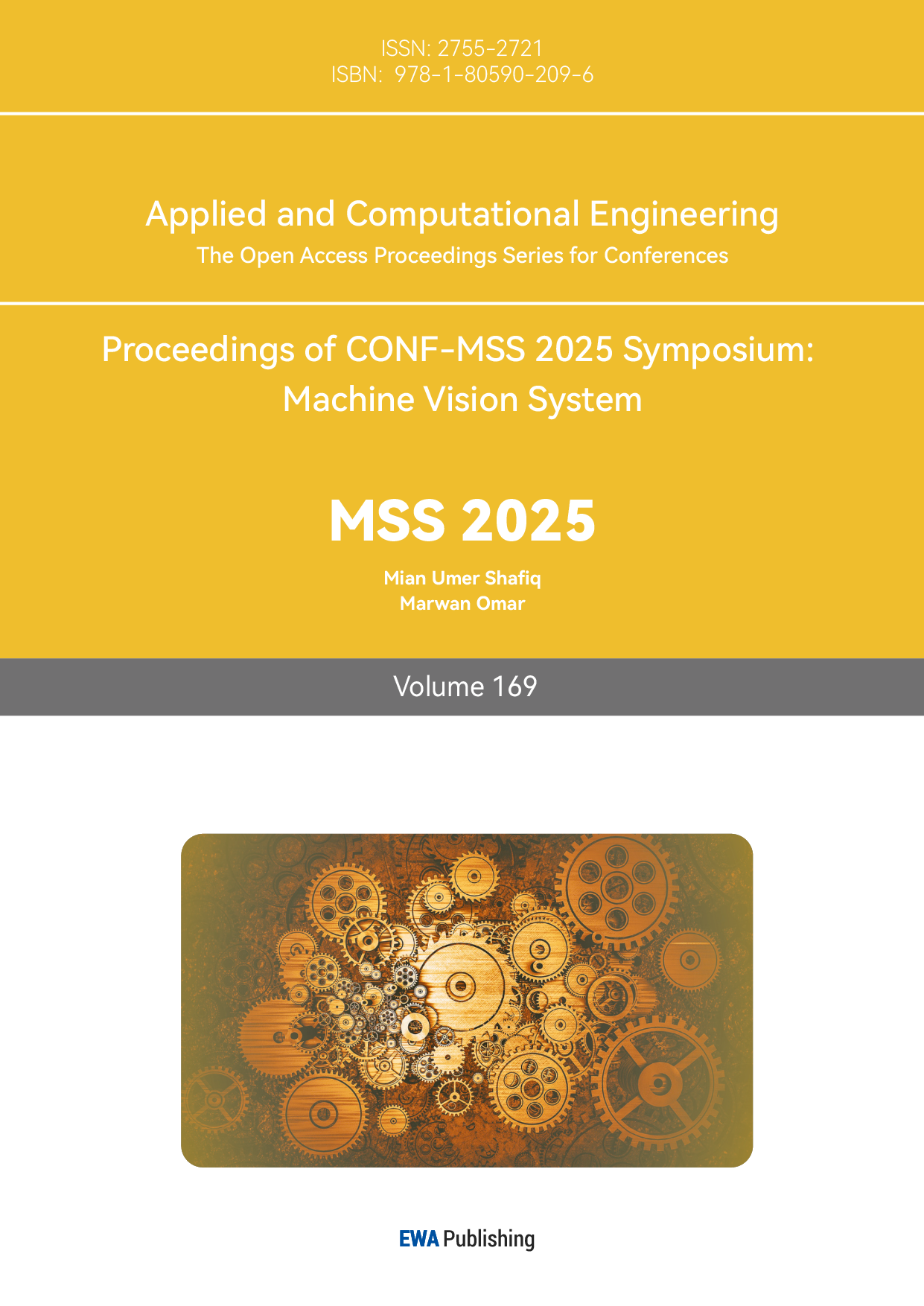References
[1]. Zhang, P. Y., Wu, G. Y., Hao, Y. L., & Li, Z. J. (2000). Advances and prospects in microgripper research.Optics and Precision Engineering, (3), 292–296.
[2]. Chen, X., **e, Z., Tai, K., Tan, H., & Chen, X. (2023). Design and test a pneumatically actuated microgripper based on structural stiffness. Review of Scientific Instruments, 94(7).
[3]. He, H. Z. (2022). Design and performance research of pneumatic soft robotic hand (Master’s thesis,Jiangsu University). https: //link.cnki.net/doi/10.27170/d.cnki.gjsuu.2022.002429doi: 10.27170/d.cnki.gjsuu.2022.002429.
[4]. Gong, J., Li, Y. H., Shi, Z. S., & Li, Q. X. (2005). Experimental study on a micro-clamping system based on shape memory alloys. New Technology and New Processes, (6), 18–20.
[5]. Li, R. (2019). Characteristic analysis and control research of shape memory alloy flexible actuator (Master’s thesis, South China University of Technology). https: //link.cnki.net/doi/10.27151/d.cnki.ghnlu.2019.001036doi: 10.27151/d.cnki.ghnlu.2019.001036.
[6]. Hua H.L., Liao Z.Q. & Chen Y.J. (2020).A 1-Dof bidirectional graspable finger mechanism for robotic gripper.Journal of Mechanical Science and Technology, 34(11), 4735-4741.
[7]. Zhang, Z. (2018). Design, fabrication, and cell manipulation experiments of electrothermally actuated microgrippers (Doctoral dissertation, Beijing University of Technology). https: //kns.cnki.net/kcms2/article/abstract?v=_GofKS1StuQhGeL9RwpSSaFTf-NpJLGuzGBGxJn0g1u9z7VtRBnitg5gjAPL4qzD9qd5w8P8ZpLvVPL7wdr--ZRn4aGaeWiI92GtWEFimt0Iu7LAFjp2FkMI0fb8AYA7YBUziFJi_YurLoXZ5Cf-KWEREAilqpED1pFtaFfBCoZmAzzjQS-TYCJC9gwC6lENdWD1uLT7_Mk=& uniplatform=NZKPT& language=CHS
[8]. van Assenbergh, P., Culmone, C., Breedveld, P., & Dodou, D. (2021). Implementation of anisotropic soft pads in a surgical gripper for secure and gentle grip on vulnerable tissues. Proceedings of the Institution of Mechanical Engineers, Part H: Journal of Engineering in Medicine, 235(3), 255-263.
[9]. Gwon, M., Park, G., Hong, D., Park, Y. J., Han, S., Kang, D., & Koh, J. S. (2022). Soft directional adhesion gripper fabricated by 3D printing process for grip** flexible printed circuit boards. International Journal of Precision Engineering and Manufacturing-Green Technology, 1-13.
[10]. Sun, L.N., Chen, L.G., Rong, W.B., Xie, H., & Liu, Y.J. (2008). Key technologies of micro-manipulation equipment for MEMS assembly and packaging. Chinese Journal of Mechanical Engineering, 44(11), 13–19.
[11]. Starke Jr, E.A., & Staley, J.T. (1996). Application of modern aluminum alloys to aircraft. Progress in aerospace sciences, 32(2-3), 131-172.
[12]. Shit, S.C., & Shah, P. (2013). A review on silicone rubber. National academy science letters, 36(4), 355-365.
[13]. Han, R., Li, Y., Zhu, Q., & Niu, K. (2022). Research on the preparation and thermal stability of silicone rubber composites: A review. Composites Part C: Open Access, 8, 100249.
[14]. Xu, W., Zhang, B., Du, K., Li, X. Y., & Lu, K. (2022). Thermally stable nanostructured Al-Mg alloy with relaxed grain boundaries. Acta Materialia, 226, 117640.
[15]. Czerwinski, F. (2020). Thermal stability of aluminum alloys. Materials, 13(15), 3441.
[16]. Slătineanu, L., Potârniche, Ş., Coteaţă, M., Grigoraş, I., Gherman, L., & Negoescu, F. (2011). Surface roughness at aluminium parts sand blasting. Proceedings in Manufacturing Systems, 6(2), 69-74.
[17]. Hopmann, C., Behmenburg, C., Recht, U., & Zeuner, K. (2014). Injection molding of superhydrophobic liquid silicone rubber surfaces. Silicon, 6(1), 35-43.



